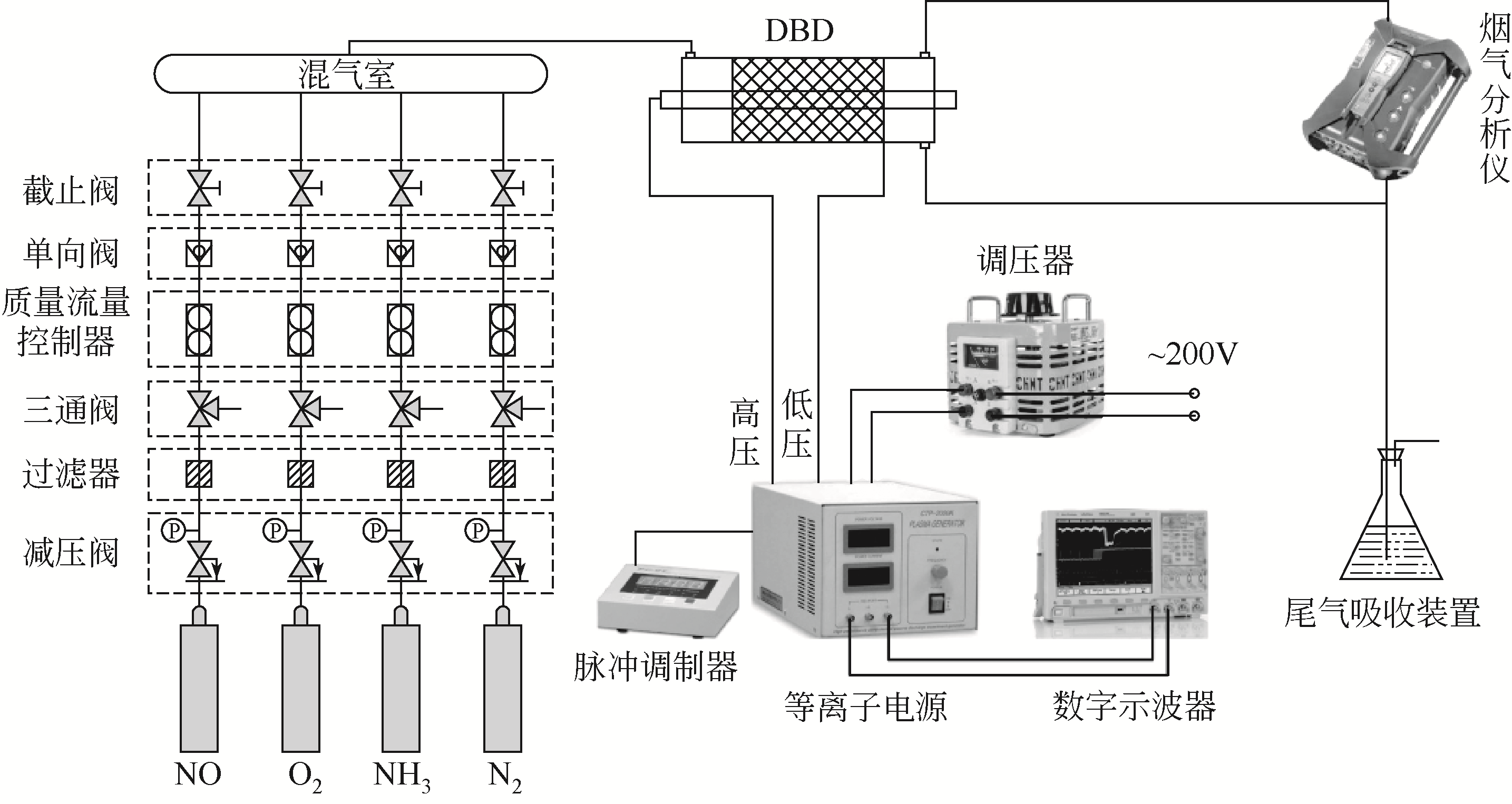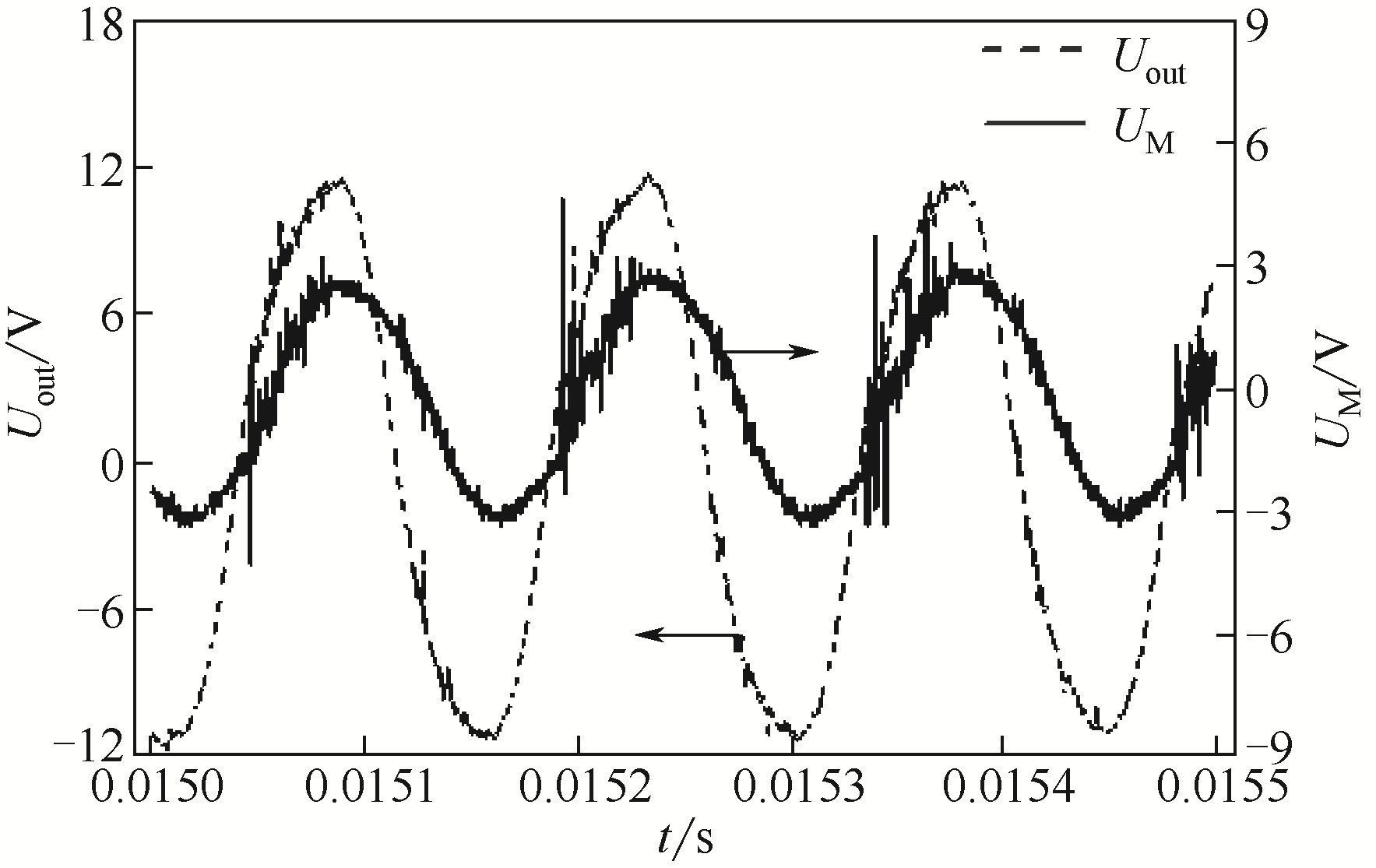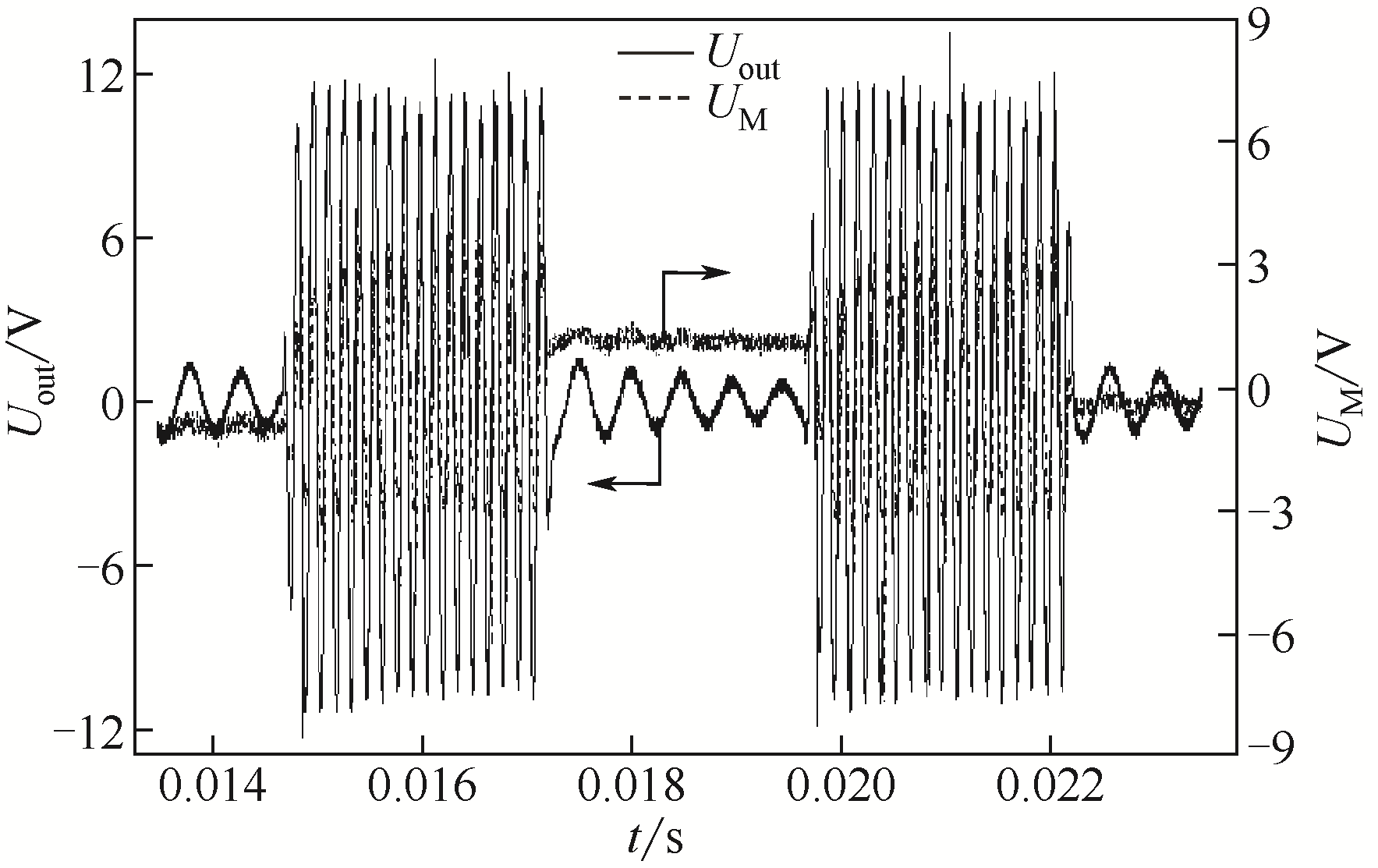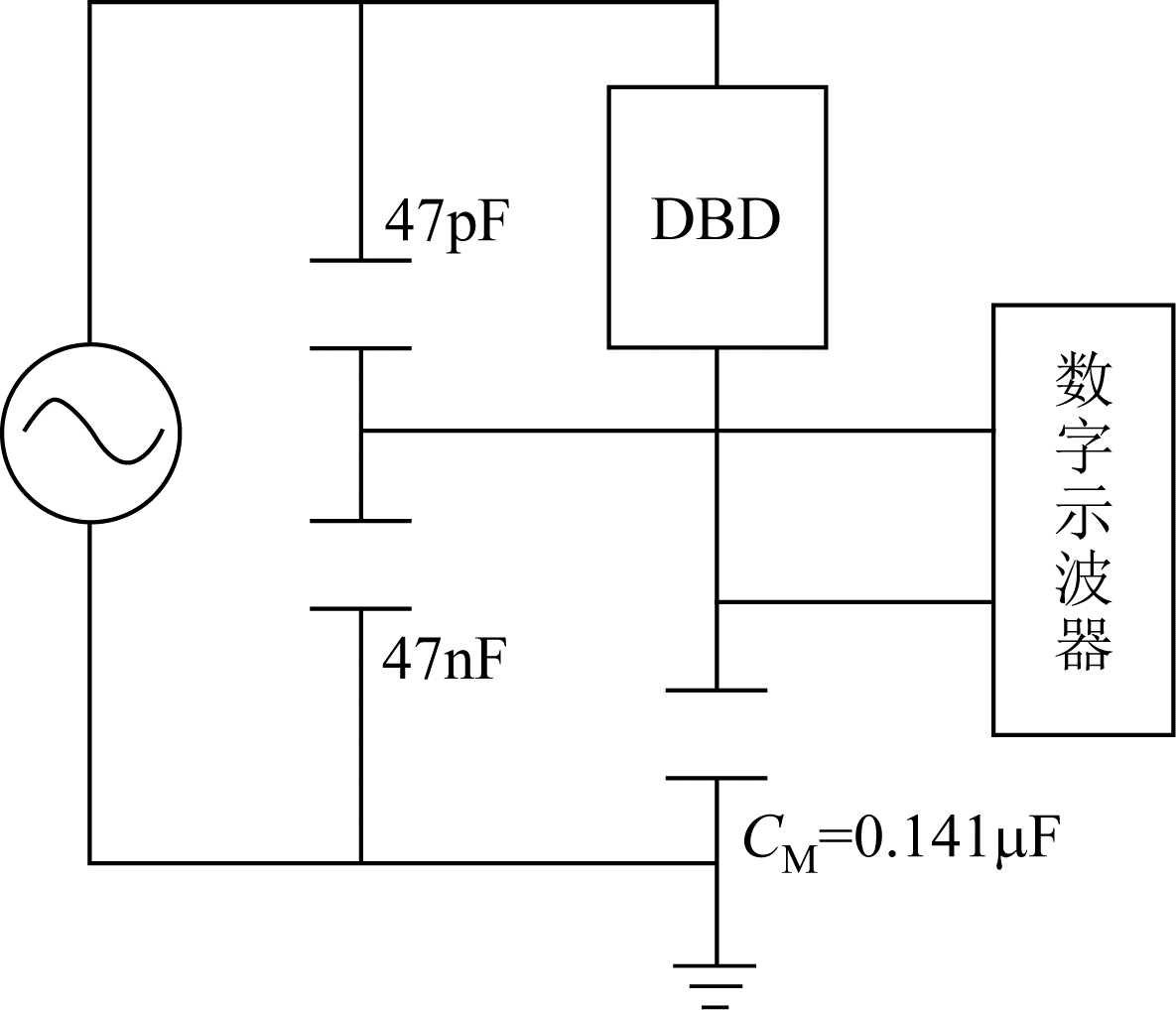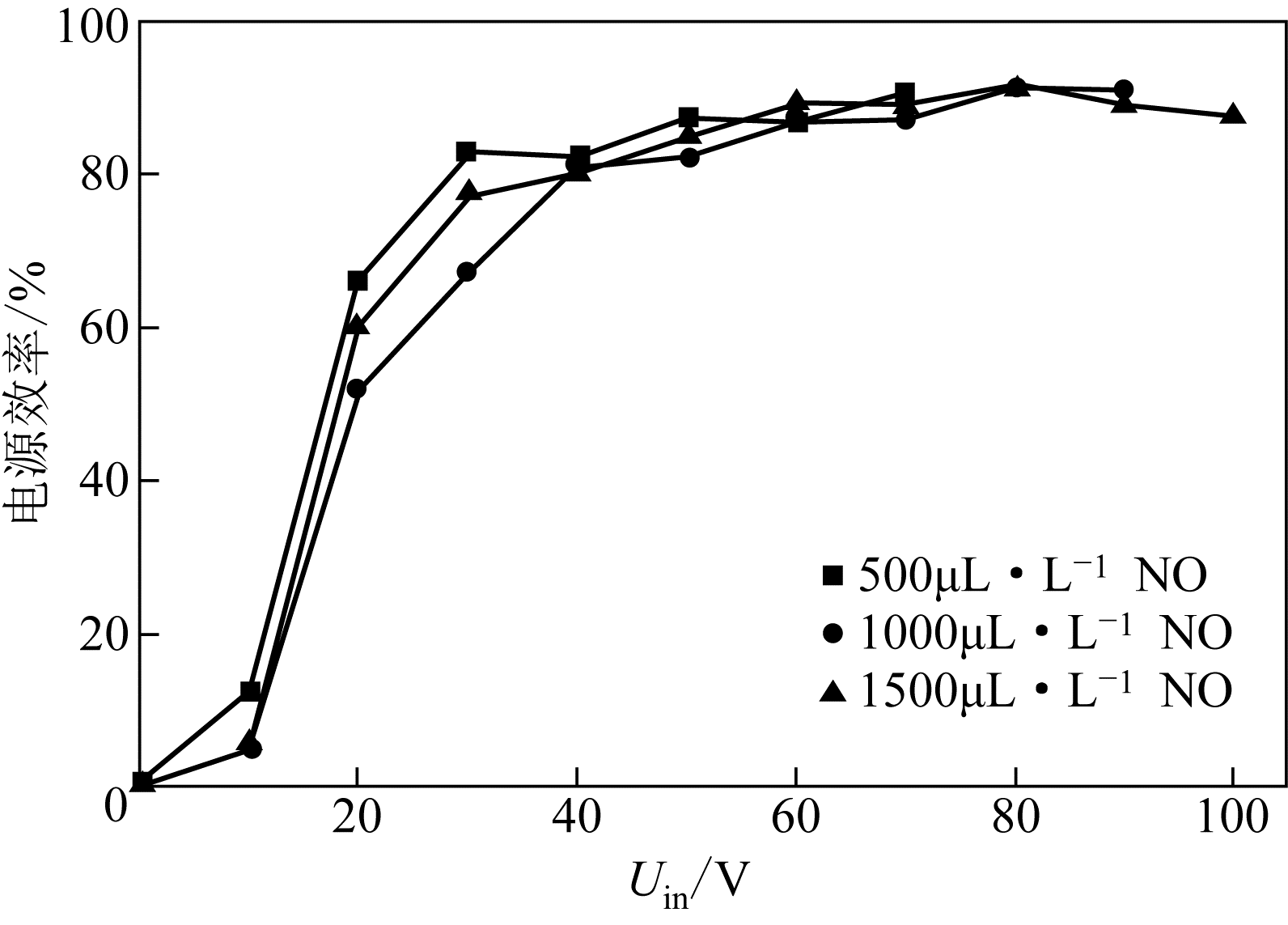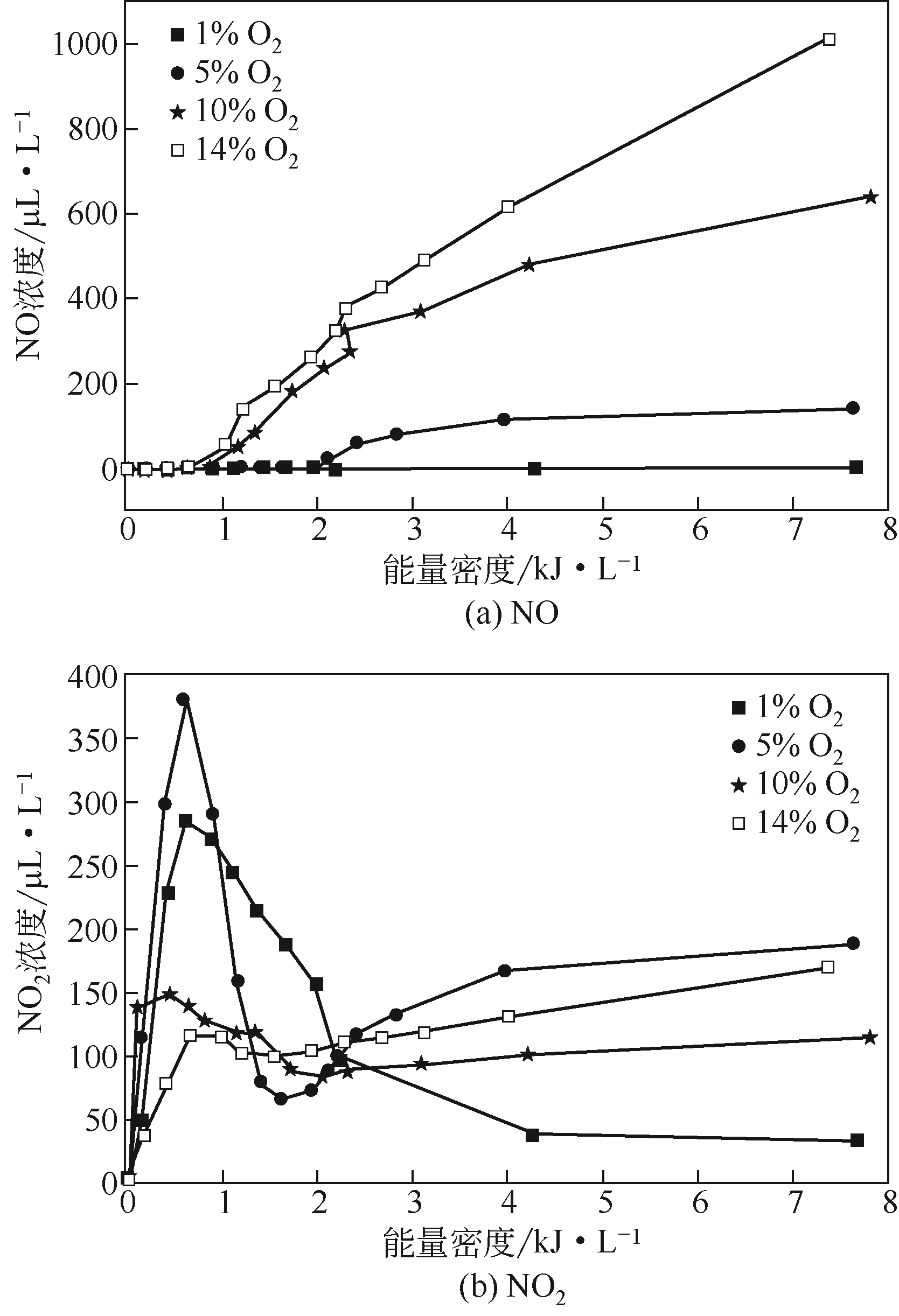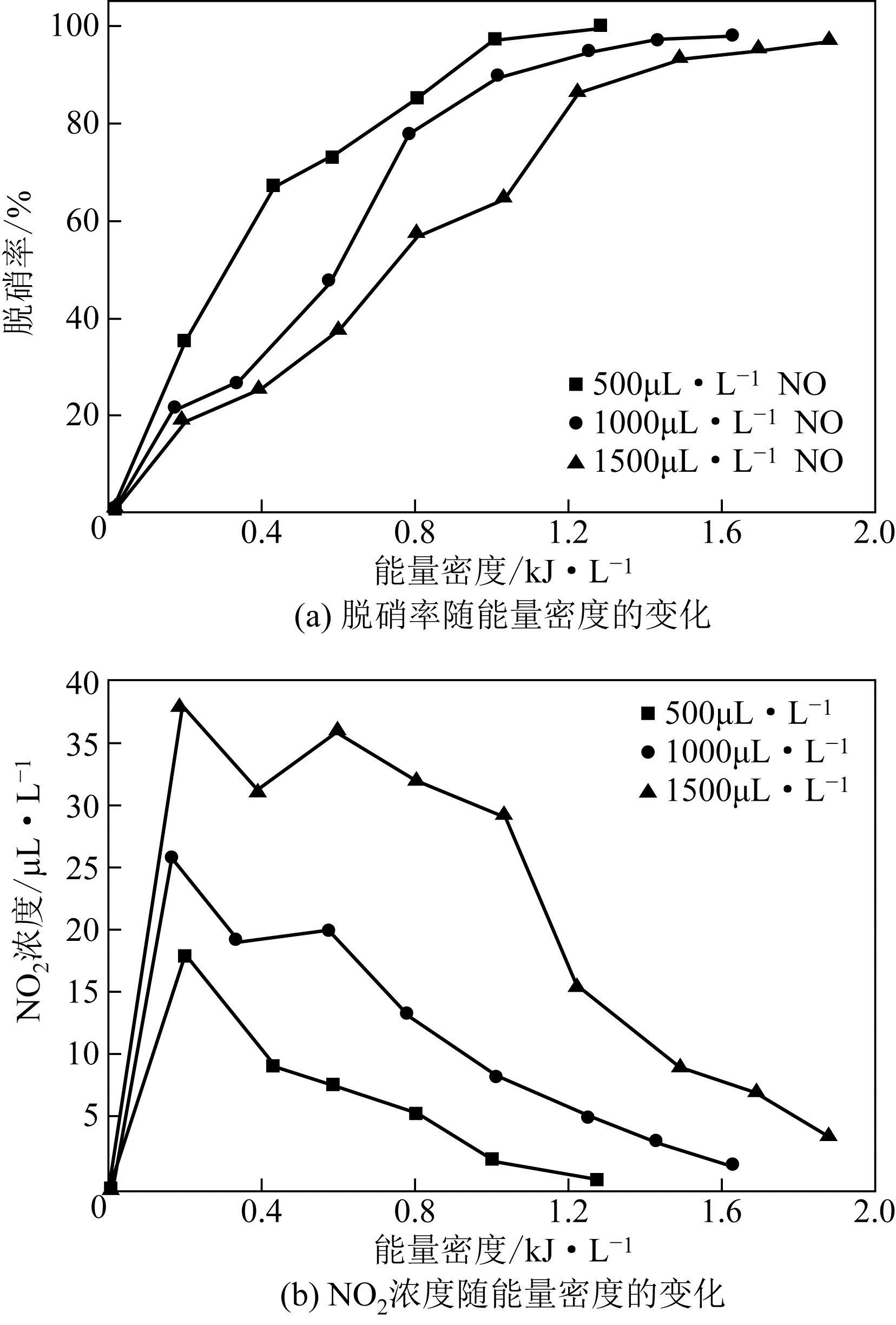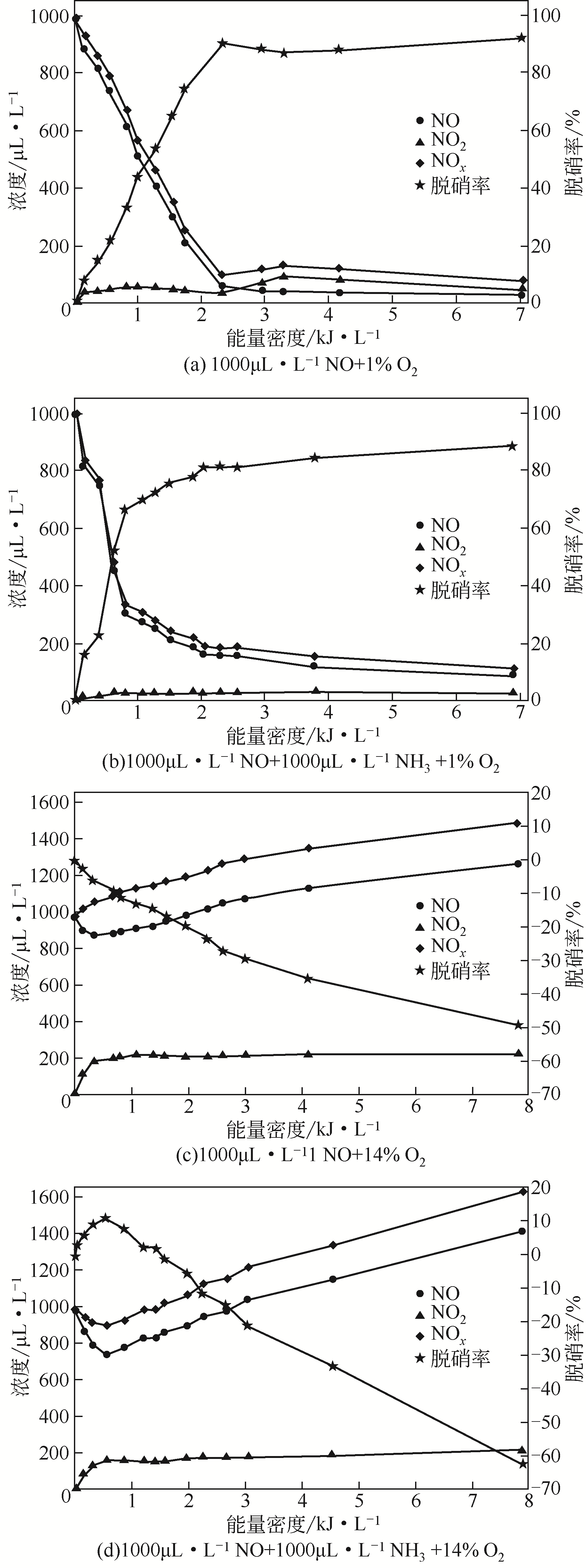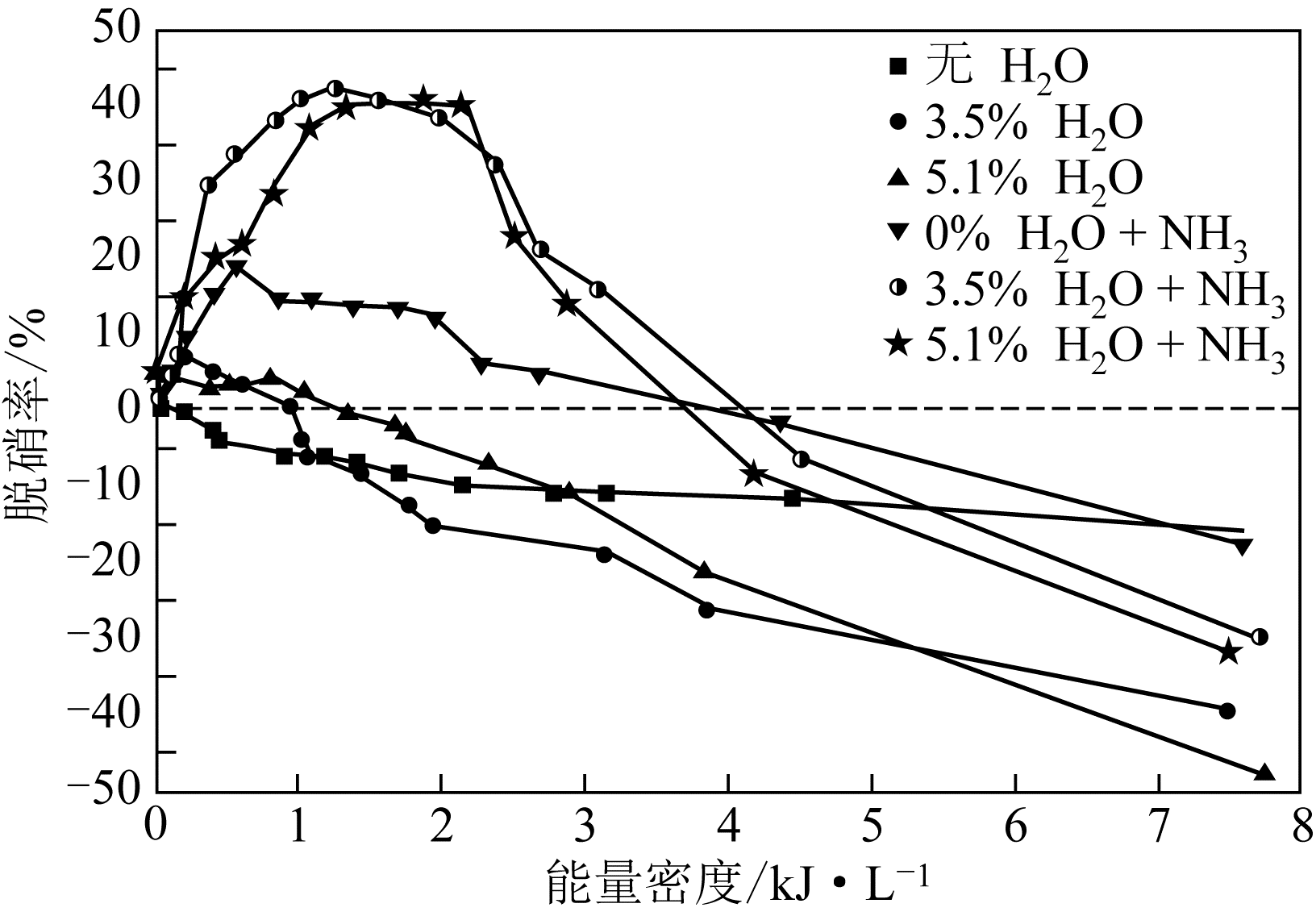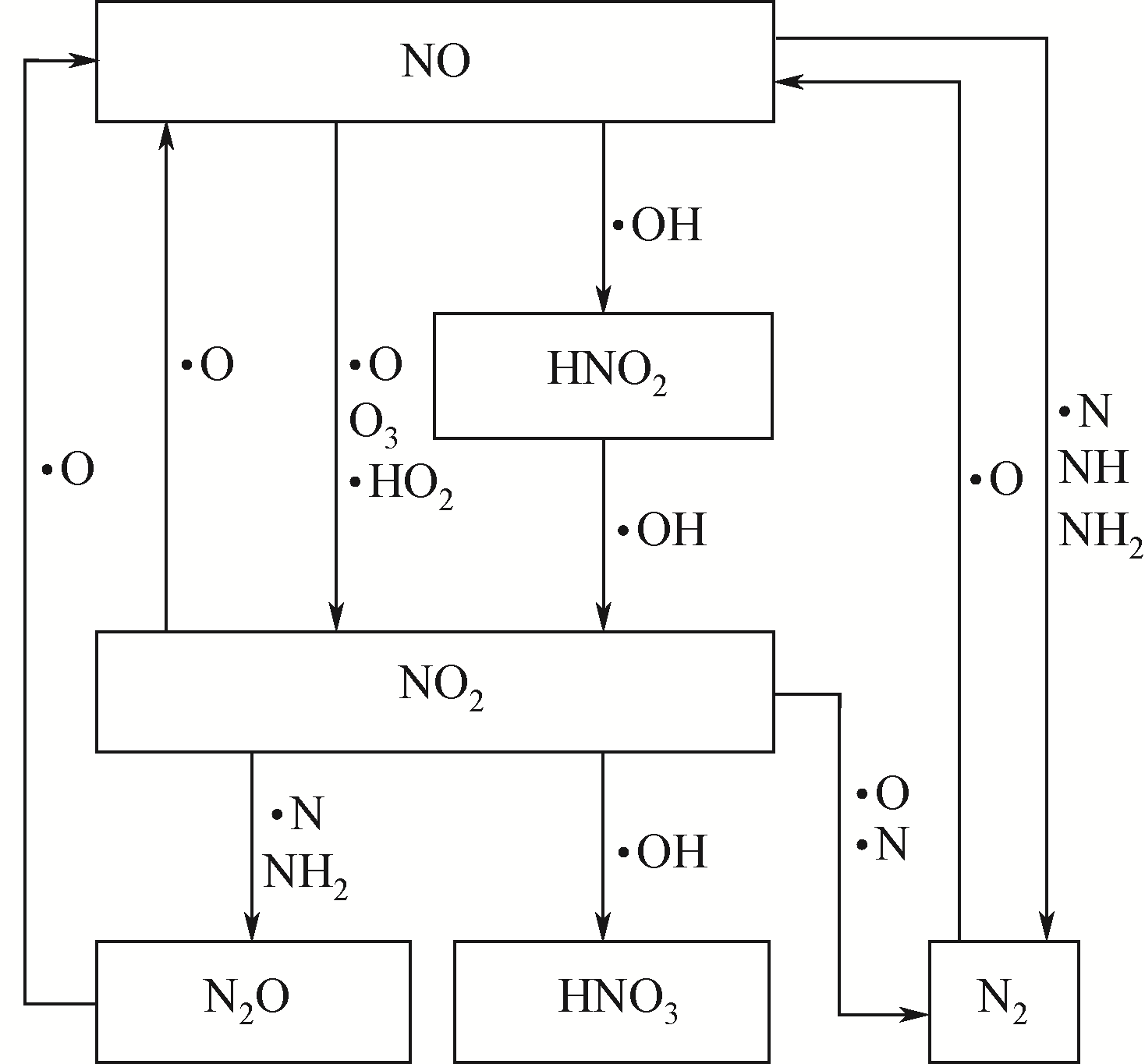化工进展 ›› 2019, Vol. 38 ›› Issue (10): 4755-4766.DOI: 10.16085/j.issn.1000-6613.042
低温等离子体用于柴油机尾气脱硝的实验
汪宗御1( ),邝海浪1,张继锋1,2,褚李林1,纪玉龙1(
),邝海浪1,张继锋1,2,褚李林1,纪玉龙1( )
)
- 1. 大连海事大学轮机工程学院,辽宁 大连 116026
2. 浙江清华长三角研究院,浙江 嘉兴 314006
-
收稿日期:2019-01-21出版日期:2019-10-05发布日期:2019-10-05 -
通讯作者:纪玉龙 -
作者简介:汪宗御(1990—),男,博士研究生,研究方向为绿色船舶与船舶尾气处理。E-mail:wangzongyu09@163.com 。 -
基金资助:国家自然科学基金(51876019);辽宁省高等学校创新人才支持计划(LR2017048);交通运输行业高端人才培养计划项目;辽宁省“兴辽英才”青年拔尖人才支持计划(XLYC1807117);中央高校基本科研业务费(3132019331)
Experimental of diesel engine denitration by non-thermal plasma
Zongyu WANG1( ),Hailang KUANG1,Jifeng ZHANG1,2,Lilin CHU1,Yulong JI1(
),Hailang KUANG1,Jifeng ZHANG1,2,Lilin CHU1,Yulong JI1( )
)
- 1. College of Marine Engineering, Dalian Maritime University, Dalian 116026, Liaoning, China
2. Yangtze Delta Region Institute of Tsinghua University, Zhejiang, Jiaxing 314006, Zhejiang, China
-
Received:2019-01-21Online:2019-10-05Published:2019-10-05 -
Contact:Yulong JI
摘要:
柴油机作为卡车、重型机械以及船舶的主动力装置仍被广泛采用,其尾气中氮氧化物的脱除技术也是目前的研究热点。本文搭建了模拟柴油机尾气的配气系统,采用介质阻挡放电产生低温等离子体(non-thermal plasma,NTP)的方法对模拟柴油机尾气进行了脱硝的实验研究。实验结果表明:针对本系统,电源效率和能量密度随着输入电压的增大而升高,当输入电压高于60V时,电源效率在90%以上;在O2/N2条件下,随着O2浓度以及能量密度的增加,NO生成量逐渐增加,NO2生成量先增加后降低最终趋于稳定;在NO/N2条件下,低温等离子体对NO的脱除率接近100%;在NO/O2/N2条件下,随着NO浓度的增加,临界O2浓度升高,O2体积分数为1%时脱硝效率在90%以上,O2体积分数高于14%时低温等离子体的脱硝率为负值,且随着能量密度的增加,生成的NO x 浓度也更高,O2浓度对低温等离子体的脱硝性能起决定性作用;在低能量密度时,加入NH3会提高脱硝性能,高能量密度时NH3会略微降低NTP的脱硝性能,当加入H2O模拟真实柴油机尾气成分且喷氨时,获得的脱硝率最高为40.6%。
中图分类号:
引用本文
汪宗御,邝海浪,张继锋,褚李林,纪玉龙. 低温等离子体用于柴油机尾气脱硝的实验[J]. 化工进展, 2019, 38(10): 4755-4766.
Zongyu WANG,Hailang KUANG,Jifeng ZHANG,Lilin CHU,Yulong JI. Experimental of diesel engine denitration by non-thermal plasma[J]. Chemical Industry and Engineering Progress, 2019, 38(10): 4755-4766.
| 1 | IMO. MEPC Resolution .203(62): Amendments to MARPOL Annex Ⅵ on Regulations for the Prevention of Air Pollution from Ships by Inclusion of New Regulations on Energy Efficiency for Ships [S]. 2011. |
| 2 | 中华人民共和国环境保护部 . 非道路移动机械用柴油机排气污染物排放限值及测量方法(中国第三、四阶段) : GB 20891—2014 [S]. 北京: 中国环境科学出版社, 2014. |
| Ministry of Environmental Protection of the People's Republic of China . Limits and measurement methods for exhaust pollutants from diesel engines of non-road mobile machinery (China Ⅲ, Ⅳ): GB 20891—2014 [S]. Beijing: China Environmental Science Press, 2016. | |
| 3 | 中华人民共和国环境保护部 . 船舶发动机排气污染物排放限值及测量方法(中国第一、二阶段): GB 15097—2016 [S]. 北京: 中国环境科学出版社, 2016. |
| Ministry of Environmental Protection of the People 's Republic of China . Limits and measurement methods for emission of marine engine exhaust pollutants (China Ⅰ, Ⅱ): GB 15097—2016 [S]. Beijing: China Environmental Science Press, 2016. | |
| 4 | DI NATALE F , CAROTENUTO C , D'ADDIO L , et al . New technologies for marine diesel engine emission control [J]. Chemical Engineering Transactions, 2013, 32: 361-366. |
| 5 | 方平, 陈雄波, 唐子君, 等 . 船舶柴油机大气污染物排放特性及控制技术研究现状 [J]. 化工进展, 2017, 36(3): 1067-1076. |
| FANG Ping , CHEN Xiongbo , TANG Zijun , et al . Current research status on air pollutant emission characteristics and control technology of marine diesel engine [J]. Chemical Industry and Engineering Progress, 2017, 36(3): 1067-1076. | |
| 6 | MA Siming , ZHAO Yongchun , YANG Jianping , et al . Research progress of pollutants removal from coal-fired flue gas using non-thermal plasma [J]. Renewable and Sustainable Energy Reviews, 2017, 67: 791-810. |
| 7 | PATIL B S , CHERKASOV N , LANG J , et al . Low temperature plasma-catalytic NO x synthesis in a packed DBD reactor: effect of support materials and supported active metal oxides [J]. Applied Catalysis B: Environmental, 2016, 194: 123-133. |
| 8 | BALACHANDRAN W , MANIVANNAN N , BELECA R , et al . Nonthermal plasma system for marine diesel engine emission control [J]. IEEE Transactions on Industry Applications, 2016, 52(3): 2496-2505. |
| 9 | KUWAHARA T , NAKAGUCHI H , KUROKI T , et al . Continuous reduction of cyclic adsorbed and desorbed NO x in diesel emission using nonthermal plasma [J]. Journal of Hazardous Materials, 2016, 308: 216-224. |
| 10 | ZHANG Zhaoshun , CROCKER M , YU Limei , et al . Non-thermal plasma assisted NO x storage and reduction over a cobalt-containing Pd catalyst using H2 and/or CO as reductants [J]. Catalysis Today, 2015, 258: 175-182. |
| 11 | GUO Lifang , SHU Youju , GAO Junmin . Present and future development of flue gas control technology of DeNO x in the World [J]. Energy Procedia, 2012, 17: 397-403. |
| 12 | 刘文正, 赵帅, 柴茂林, 等 . 采用辉光放电等离子体的烟气处理技术研究[J]. 中国环境科学, 2017(8): 2905-2914. |
| LIU Wenzheng , ZHAO Shuai , CHAI Maolin , et al . Technology of flue gas treatment with glow discharge plasma [J]. China Environmental Science, 2017(8): 2905-2914. | |
| 13 | DING Shuilan , YU Qi , ZHANG Yingzhou , et al . Experimental study on NO removal using non-thermal plasma oxidation alkali absorption [J]. Journal of Advanced Oxidation Technologies, 2015, 18(1): 114-122. |
| 14 | WANG Tao , SUN Baomin , XIAO Haiping , et al . Effect of reactor structure in DBD for nonthermal plasma processing of NO in N2 at ambient temperature [J]. Plasma Chemistry and Plasma Processing, 2012, 32(6): 1189-1201. |
| 15 | YUKIMURA K , KAWAMURA K , HIRAMATSU T , et al . Efficient decomposition of NO by ammonia radical-injection method using an intermittent dielectric barrier discharge [J]. Thin Solid Films, 2007, 515(9): 4278-4282. |
| 16 | 李斌 . 船舶柴油机[M]. 大连: 大连海事大学出版社, 2008. |
| LI Bin . Marine diesel engine [M]. Dalian: Dalian Maritime University Press, 2008. | |
| 17 | CHMIELEWSKI A G , ZWOLINSKA E , LICKI J , et al . A hybrid plasma-chemical system for high-NO x flue gas treatment [J]. Radiation Physics and Chemistry, 2018, 144: 1-7. |
| 18 | YU Qingjun , GAO Yueming , TANG Xiaolong , et al . Removal of NO from flue gas over HZSM-5 by a cycling adsorption-plasma process [J]. Catalysis Communications, 2018, 110: 18-22. |
| 19 | ZHAO Guibing , GARIKIPATI S V B J , HU Xudong , et al . Effect of oxygen on nonthermal plasma reactions of nitrogen oxides in nitrogen [J]. AIChE Journal, 2005, 51(6): 1800-1812. |
| 20 | 周莹, 仲兆平, 付宗明, 等 . 等离子体氧化NO的试验研究及神经网络预测[J]. 华东电力, 2012(7): 1217-1221. |
| ZHOU Ying , ZHONG Zhaoping , FU Zongming , et al . Experimental research and neural network prediction of NO oxidation based on plasma [J]. East China Electric Power, 2012(7): 1217-1221. | |
| 21 | 张居兵, 周莹, 仲兆平, 等 . 等离子体氧化NO耦合湿式氨法同时脱硫脱硝试验研究[J]. 东南大学学报(自然科学版), 2014(6): 1194-1199. |
| ZHANG Jubing , ZHOU Ying , ZHONG Zhaoping , et al . Experimental study on simultaneous desulfurization and denitrification with ammonia in WFGD system combined with plasma oxidation of NO [J]. Journal of Southeast University (Natural Science Edition), 2014(6): 1194-1199. | |
| 22 | ARITOSHI K , FUJIWARA M , ISHIDA M . Production and removal mechanisms of discharge NO x treatment in N2/O2 gas mixture [J]. Japanese Journal of Applied Physics, 2002, 41(6R): 3936. |
| 23 | MOK Y S, NAM I . Modeling of pulsed corona discharge process for the removal of nitric oxide and sulfur dioxide [J]. Chemical Engineering Journal, 2002, 85(1): 87-97. |
| 24 | ROSENTHAL L A , DAVIS D A . Electrical characterization of a corona discharge for surface treatment [J]. IEEE Transactions on Industry Application, 1975, 11(3): 328-335. |
| 25 | 王东 . 介质阻挡放电等离子体脱除氮氧化物的实验研究[D]. 北京: 华北电力大学, 2014. |
| WANG Dong . Experimental research on the removal of nitrogen oxides by dielectric barrier discharge plasma [D]. Beijing: North China Electric Power University, 2014. | |
| 26 | 孙红华 . 介质阻挡放电低温等离子体脱硫脱硝研究 [D]. 北京: 华北电力大学, 2009. |
| SUN Honghua . Study on the removal of SO2/NO with dielectric barrier discharge non-thermal plasma [D]. Beijing: North China Electric Power University, 2009. | |
| 27 | 张晓星, 胡雄雄, 肖焓艳, 等 . 不同背景气体对介质阻挡放电降解SF6气体影响的实验研究[J]. 中国电机工程学报, 2018, 38(3): 937-946. |
| ZHANG Xiaoxing , HU Xiongxiong , XIAO Hanyan , et al . Experimental study on the effect of different dilution gases to the degradation of SF6 gas by dielectric barrier discharge [J]. Proceedings of the CSEE, 2018,38(3): 937-946. | |
| 28 | HERRON J . Evaluated chemical kinetics data for reactions of N(2D), N(2P), and N2(A3∑u +) in the gas phase [J]. Journal of Physical and Chemical Reference Data, 1999, 28: 1453-1483. |
| 29 | FERNANDEZ A , GOUMRI A , FONTIJN A . Kinetics of the reactions of N(4S) atoms with O2 and CO2 over wide temperatures ranges [J]. The Journal of Physical Chemistry A, 1998, 102(1): 168-172. |
| 30 | HERRON J T , GREEN D S . Chemical kinetics database and predictive schemes for nonthermal humid air plasma chemistry. Part Ⅱ. Neutral species reactions [J]. Plasma Chemistry and Plasma Processing, 2001, 21(3): 459-481. |
| 31 | ATKINSON R , BAULCH D L , COX R A, et al . Evaluated kinetic and photochemical data for atmospheric chemistry: Supplement Ⅳ IUPAC subcommittee on gas kinetic data evaluation for atmospheric chemistry [J]. Journal of Physical and Chemical Reference Data, 1992, 21(6): 1125-1568. |
| 32 | 纪瑞军, 徐文青, 王健, 等 . 臭氧氧化脱硝技术研究进展[J]. 化工学报, 2018, 69(6): 2353-2363. |
| JI Ruijun , XU Wenqing , WANG Jian , et al . Research progress of ozone oxidation denitrification technology [J]. CIESC Journal, 2018, 69(6): 2353-2363. | |
| 33 | 梁文俊, 李晶欣, 竹涛 . 低温等离子体大气污染控制技术及应用[M]. 北京: 化学工业出版社, 2016. |
| LIANG Wenjun , LI Jingxin , ZHU Tao . Air pollution control technology and application of low temperature plasma [M]. Beijing: Chemical Industry Press, 2016. | |
| 34 | TOKUNAGA O , SUZUKI N . Radiation chemical reactions in NO x and SO2 removals from flue gas [J]. Radiation Physics and Chemistry, 1984, 24(1): 145-165. |
| [1] | 赖诗妮, 江丽霞, 李军, 黄宏宇, 小林敬幸. 含碳掺氨燃料的研究进展[J]. 化工进展, 2023, 42(9): 4603-4615. |
| [2] | 李佳, 樊星, 陈莉, 李坚. 硝酸生产尾气中NO x 和N2O联合脱除技术研究进展[J]. 化工进展, 2023, 42(7): 3770-3779. |
| [3] | 龙红明, 丁龙, 钱立新, 春铁军, 张洪亮, 余正伟. 烧结烟气中NO x 和二 英的减排现状及发展趋势[J]. 化工进展, 2022, 41(7): 3865-3876. 英的减排现状及发展趋势[J]. 化工进展, 2022, 41(7): 3865-3876. |
| [4] | 杨希刚, 陈国庆, 黄林滨, 古世军, 李昌松, 张勇, 金保昇. 尿素法SNCR对大型电站煤粉锅炉运行影响的工业试验[J]. 化工进展, 2022, 41(7): 3573-3581. |
| [5] | 韩徳琳, 李丹, 王天天, 张海, 张扬, 王随林. 位移钝体稳燃的旋流预混燃烧污染物生成特性[J]. 化工进展, 2022, 41(6): 2915-2923. |
| [6] | 王新宇, 黄亚继, 徐力刚, 李志远, 李偲, 刘晓东. 调节同层二次风以缓解双切圆锅炉高温腐蚀的数值模拟[J]. 化工进展, 2022, 41(5): 2292-2300. |
| [7] | 王思怡, 李月慧, 葛玉洁, 王焕然, 赵璐璐, 李先春. NTP-DBD气化城市污泥及其模型化合物: 气氛对产物分布及特性的影响[J]. 化工进展, 2022, 41(4): 2150-2160. |
| [8] | 张维, 汪宗御, 郭玉, 杨孟飞, 李政楷, 常超, 张继锋, 纪玉龙. 大气压介质阻挡放电及协同催化剂脱硝研究进展[J]. 化工进展, 2022, 41(12): 6644-6655. |
| [9] | 杨景瑞, 王莹, 陈虎, 吕永康. 氧浓度对调节NO x 氧化度协同CABR法脱硝性能及菌群结构的影响[J]. 化工进展, 2022, 41(11): 6139-6148. |
| [10] | 谭潇, 齐随涛, 周一鸣, 石利斌, 程光旭, 伊春海, 杨伯伦. 非热等离子体协同锰铁双金属催化剂直接催化还原NO[J]. 化工进展, 2022, 41(11): 5850-5857. |
| [11] | 毕文菲, 代成义, 李雪梅, 贺建勋, 赵彬然, 马晓迅. 等离子体与Cu-Pd/S-1催化剂协同催化甲烷转化制低碳烯烃[J]. 化工进展, 2022, 41(1): 227-236. |
| [12] | 彭冲, 刘鹏, 胡永康, 肖文德, 潘云翔. 低温等离子体构筑高效Ni基催化剂进展[J]. 化工进展, 2021, 40(7): 3553-3563. |
| [13] | 尹子骏, 苏胜, 王中辉, 王乐乐, 安晓雪, 赵志刚, 陈逸峰, 刘涛, 汪一, 胡松, 向军. 燃煤烟气中SO3与NH4HSO4生成特性及其控制方法研究进展[J]. 化工进展, 2021, 40(4): 2328-2337. |
| [14] | 刘月华, 上官炬, 刘守军, 杨颂, 杜文广. 铁镍复合助剂对煤热解过程中氮迁移规律的影响[J]. 化工进展, 2021, 40(1): 164-172. |
| [15] | 赵亚飞, 叶凯, 庄烨, 郑进保. 锰基催化剂协同等离子降解VOCs研究进展[J]. 化工进展, 2020, 39(S2): 175-184. |
| 阅读次数 | ||||||
|
全文 |
|
|||||
|
摘要 |
|
|||||
